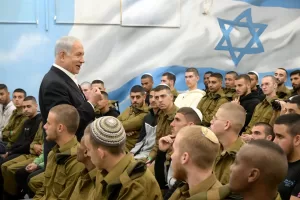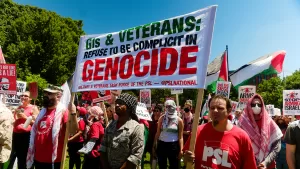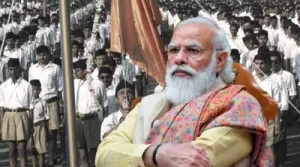It was March 18, 1944. The First Division of the Indian National Army entered Manipur from Burma, mainly through the Tamu-Moreh border. For the next four months, until mid-July, virtually the entire southern half of Manipur, an area of 10,000-12,000 square kilometres, was under the authority of the Provisional Government of Free India (Arzi Hukumat-e Azad Hind) proclaimed by Subhas Chandra Bose in Singapore on October 21, 1943.
The First Division’s Gandhi Brigade, led by Colonel Inayat Jan Kiani, fought with distinction in the hills of Palel and Tengnoupal, just east of the Imphal valley. In the Ukhrul district, to Imphal’s north, the Subhas Brigade led by Shah Nawaz Khan cut the Imphal-Kohima road. A detachment of the INA’s Bahadur Group, special forces under the command of Colonel Shaukat Malik, camped in and operated from the town of Moirang in the Imphal valley, 40 km south of Imphal. The entire Manipur offensive was supervised by Mohammad Zaman Kiani, the First Division’s commander, who set up his base in Chamol, a mountain village close to the Burma border.
This military history is reasonably well-known. What is less known is that all the different communities of Manipur rallied to the INA’s cause and extended not just support but active participation.
The history
In October 1972, my parents, Sisir Kumar Bose and Krishna Bose, toured Manipur and gathered eyewitness accounts of that tumultuous period of struggle. My mother then wrote about it in Bengali. The original Bengali article is one of 18 articles and essays, most previously published only in Bengali, that make up Krishna Bose’s Netaji: Subhas Chandra Bose’s Life, Politics & Struggle (ed. and trans. Sumantra Bose), published by Picador India in August 2022 and released in paperback in March 2023. The article’s English version is titled The Battlefields of Manipur.
On April 14, 1944, Krishna Bose writes, the Bahadur Group’s soldiers and hundreds of civilians gathered in Moirang – an ancient seat of Manipuri kings on the banks of the Loktak Lake. It was the Manipuri Meiteis’ New Year Day. Shaukat Malik hoisted the tricolour with the charkha in the centre and then made a rousing speech. The Hindustani speech was translated for the locals by a young man called M. Koireng Singh, who was one of my parents’ hosts and informants during the 1972 visit.
Koireng Singh, popularly known as ‘Moirang Koireng’, became the first elected chief minister of Manipur in the 1960s. Until the withdrawal from Manipur in July, the Bahadur Group’s soldiers were sustained by the local people, who shared their rice, vegetables, and fish from the Loktak Lake.
Another native of Moirang, H. Nilamani Singh, also hosted my parents in 1972. He was then the state’s education minister and the MLA from Moirang. In 1944, Nilamani Singh’s family gave up their own house to Shaukat Malik, who established his command centre there (the modest homestead still stands, with machine-gun marks visible).
When the INA retreated back into Burma in July, 17 Manipuri youths joined the retreat. Four, including Koireng Singh and Nilamani Singh, were from Moirang and 13 others had come secretly from British-held parts of Manipur. All were members of the Nikhil Manipuri Mahasabha, an anti-colonial organisation. Two of the 17 youths were women activists – Keinya Devi and Randhoni Devi.
It took them almost two months of trekking through hill ranges, jungles, and rivers to reach Rangoon. It was dangerous during the day because of constant aerial bombing and strafing, so they mostly moved at night. On arrival in Rangoon, the group of 17 met Netaji.
Nilamani Singh handed him Rs 3,000 — his father’s life savings. Nilamani’s father had given him the money and told him: ‘If you get to meet Netaji, give him this.’
When the British re-occupied Rangoon in May 1945, the 17 patriots were incarcerated in the Rangoon Central Jail. After seven months, they were brought to Calcutta as prisoners. Finally freed in May 1946, they returned to Manipur to a euphoric welcome and permanent celebrity status.
A legacy of unity and amity
The Meiteis are predominantly Vaishnavites. But Meitei-speaking Muslims, known as Pangals, who also live in the Imphal valley, make up almost 10% of the state’s population.
In 1972, my parents met Naki Mohammad, an INA soldier from this community. He had been a sepoy in the British-Indian army and joined the Azad Hind Fauj after the mass surrender in Singapore in February 1942.
Naki Mohammad had left his homeland to fight to save the British Empire in Asia; he returned to his homeland as a soldier of the Bahadur Group. As the Bahadur Group approached Moirang from the south along the Tiddim Road from Burma, Shaukat Malik first sent Naki Mohammad as a scout into the town to speak to the local people and seek their support. Then, from the base in Moirang, Naki Mohammad conducted solo reconnaissance and intelligence-gathering for several months in the British-held areas. He was eventually caught and taken to the Red Fort in Delhi for brutal interrogation, and transferred later to the Multan jail in Punjab.
My parents were surprised to hear from Nilamani and Koireng Singh that Netaji came briefly to Manipur just before the INA’s retreat from Indian soil began. But Netaji didn’t come to the Imphal valley, they said; he came to southern Manipur, a place called Churachandpur.
On making enquiries in Churachandpur, Krishna and Sisir Bose were directed to a village called Saikot, four miles east of the town. The old ‘raja’ (meaning king) of Saikot is still alive, they were told, and he knows everything.
On being told of a ‘raja,’ Krishna Bose was expecting to find a palace or castle in Saikot. They found his dwelling to be a dilapidated hut. But he was a ‘raja.’ The Kuki-Zo people refer to their traditional village chief by that title.
The ‘raja,’ named Kolbel, was 75 years old in 1972 but quite fit and very lucid. He was dressed in a worn Western-style suit. He had been in France for some time during World War I, one of the many young Kuki men taken by the British to dig trenches and do other menial work in the battlefields of Europe.
Kolbel recalled the date – it was July 2, 1944. There was a large INA camp in the hills above the village. Netaji came to that camp, he said. Then, as dusk fell, he came down to the village. He sat under a tree in Kolbel’s garden to get some rest. ‘This is the tree,’ Kolbel showed to his visitors with pride. It is said that the whole village takes good care of it.
It was clearly the most memorable incident in Kolbel’s long life. It was a brightly moonlit night, he remembered.
His garden slopes down to a stream. Several hundred INA soldiers came and sat on that slope. Netaji, in his khaki uniform with a hip-holstered pistol and military boots, gave a short speech. The villagers made and served steaming hot tea to all the soldiers.
When Kolbel offered Netaji a large tumbler of milk, he enquired why he was being given milk instead of tea. Kolbel explained that it is their social custom to offer milk to distinguished guests. Accepting the milk, Netaji said that normally he only ate and drank what his soldiers did.
Before leaving, Netaji told Kolbel he was aware that all the villages in the area had been supplying essential food items to his troops for some time. He said that he would not forget their help in freeing India. He then signed on a piece of paper and gave it to Kolbel to keep, but cautioned him to be careful for his own sake that it did not fall into the hands of the Britishers.
Kolbel buried the chit under the earth with a few other items in a box, and it got spoiled when water seeped into it.
The Meiteis, Pangals, and Kukis of Manipur, all extended support to the INA and its struggle. Their own experiences of colonial rule shaped this cooperation and solidarity. The Meiteis had not forgotten the public hanging of Prince Tikendrajit Singh and his general in Imphal at the conclusion of the Anglo-Manipur War of 1891. The Kukis could hardly have forgotten the British atrocities during the 1917-1919 Anglo-Kuki War.
The Naga people were not an exception either. Ukhrul, where Shah Nawaz Khan’s Subhas Brigade operated, is a predominantly Tangkhul Naga area of Manipur. Angami Zapu Phizo, the pioneer of Naga nationalism, joined the INA in 1944 and retreated with his Naga comrades to Rangoon, just like the Meitei youths of the Imphal valley.
This legacy of unity and amity was sadly lost in independent India. Instead, the North East, including Manipur, became the country’s chronically restive region.
In October 1985, Sisir and Krishna Bose travelled to Manipur again after 13 years. I joined my parents on that trip, along with Colonel Prem Sahgal of the INA. I was a schoolboy then but distinctly remember that all of Manipur’s communities regarded the Indian state, and especially its armed forces, with hostility and even hatred.
A misfortune for Manipur, but an even greater misfortune for India.
[The writer is a political scientist and the director of the Netaji Research Bureau at Kolkata’s Netaji Bhawan. He has authored ‘Kashmir at the Crossroads: Inside a 21st-Century Conflict’ (Yale University Press and Picador India, 2021). Courtesy: The Wire.]




